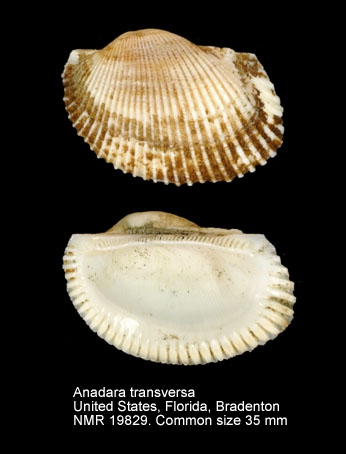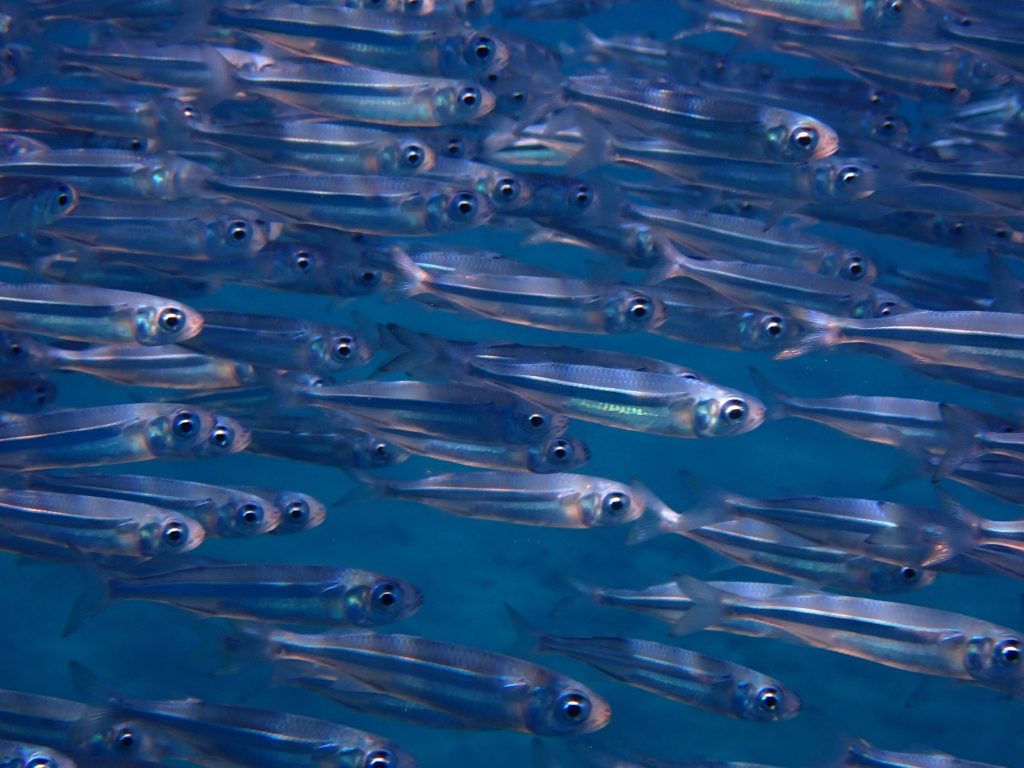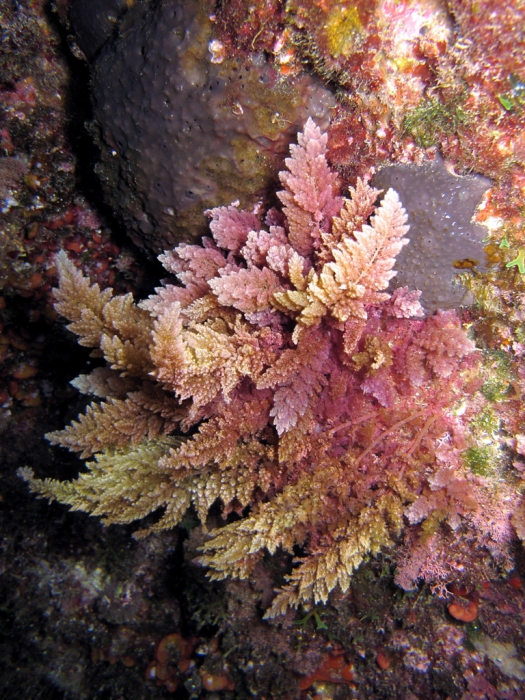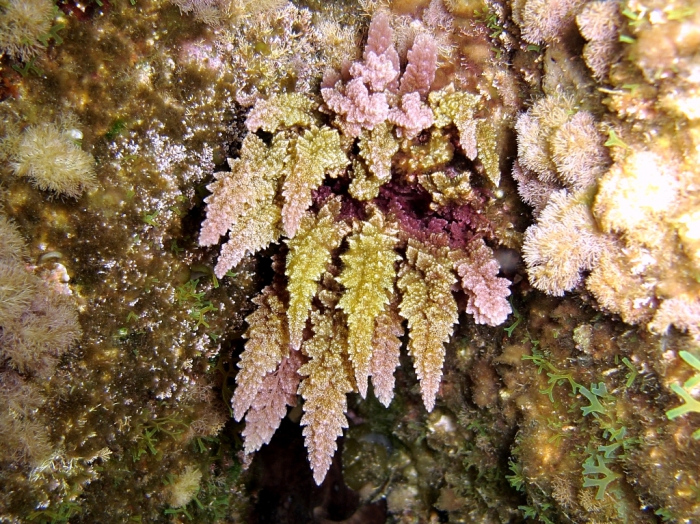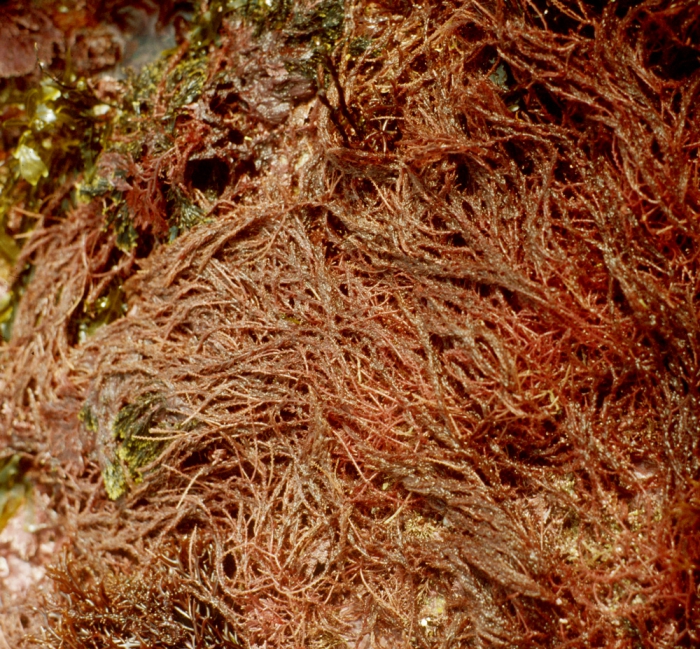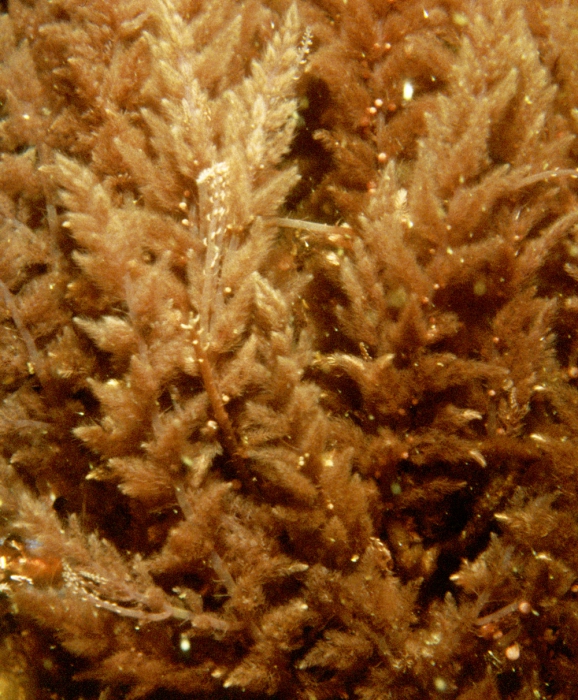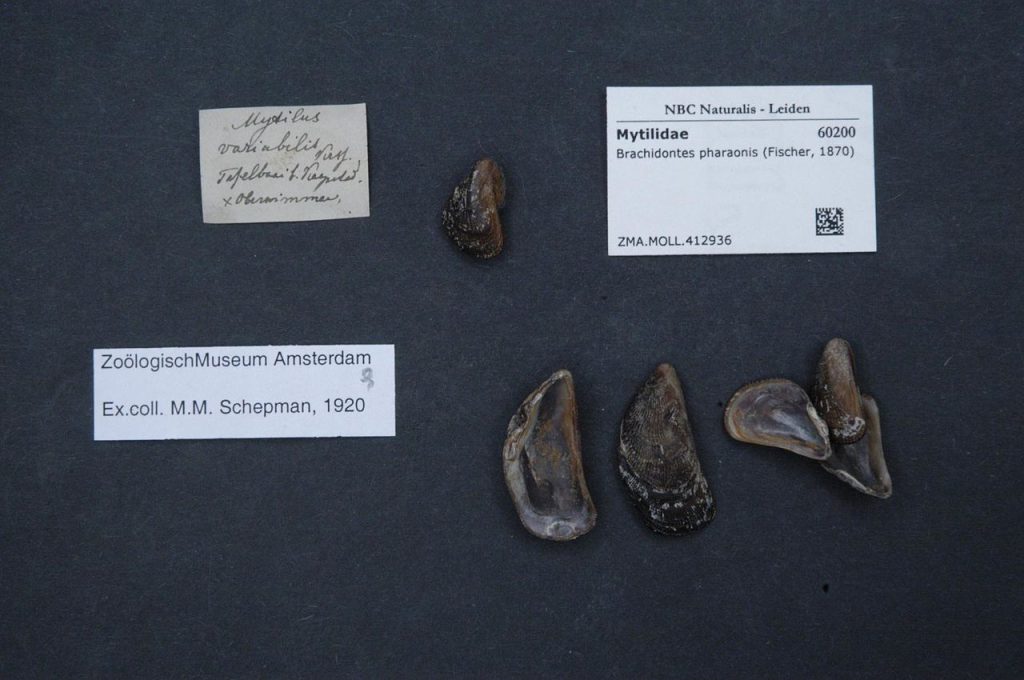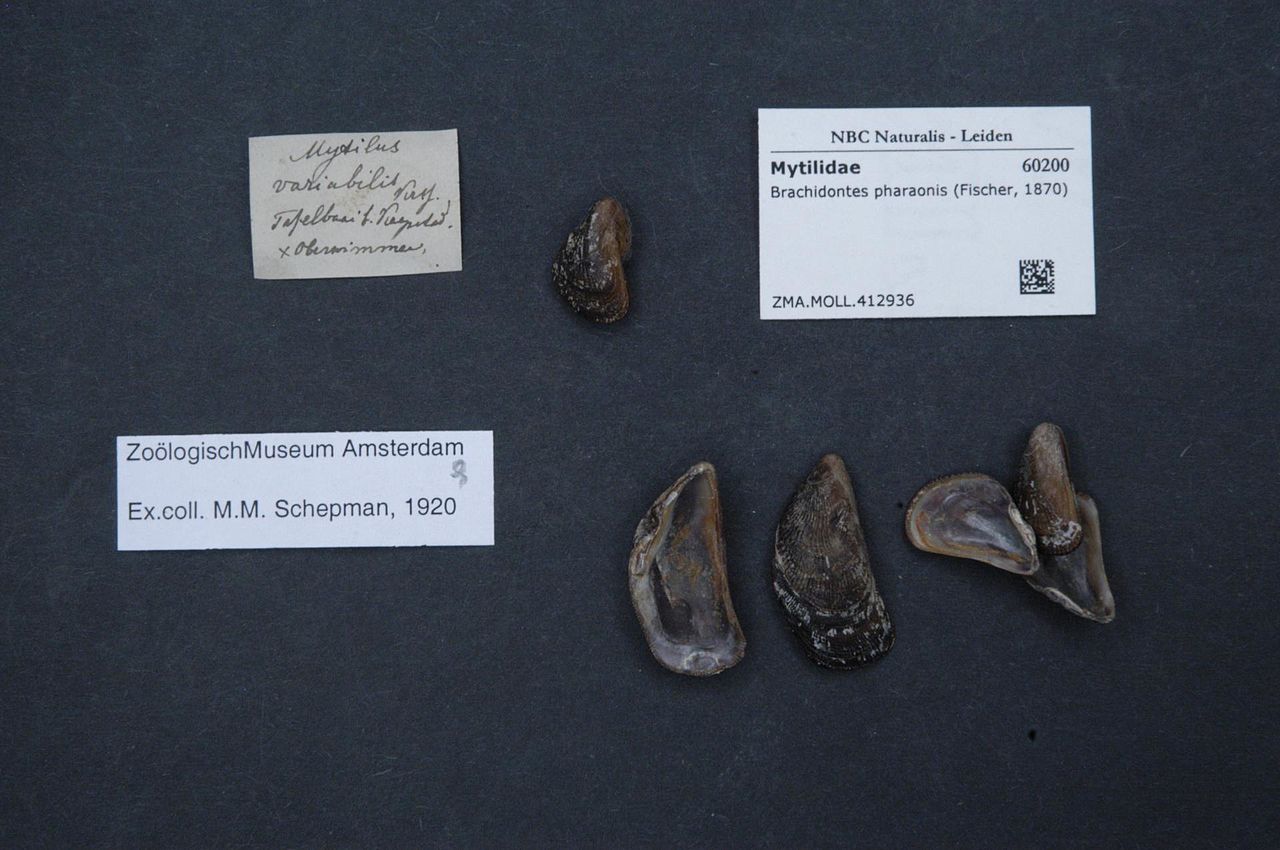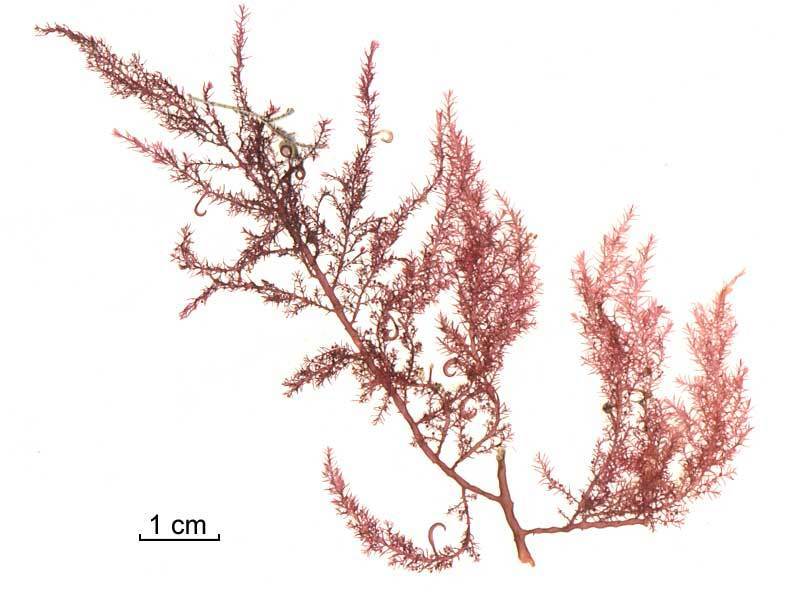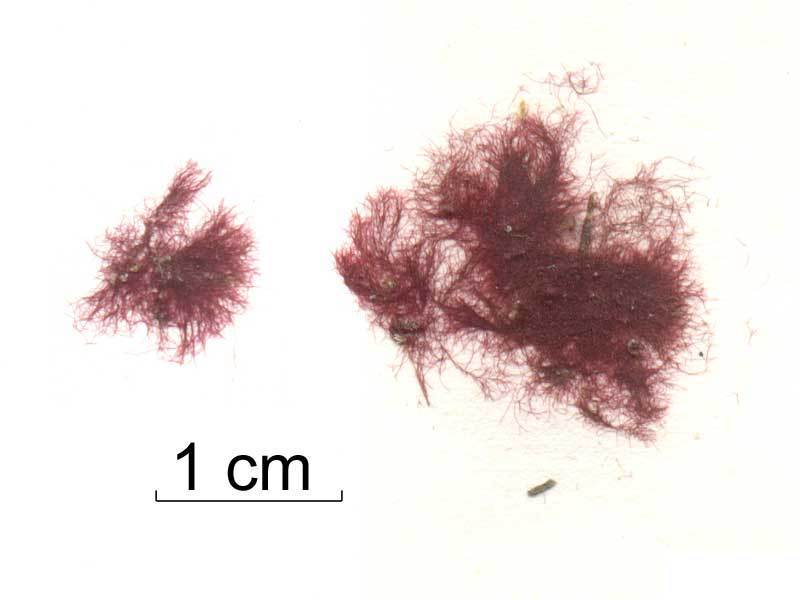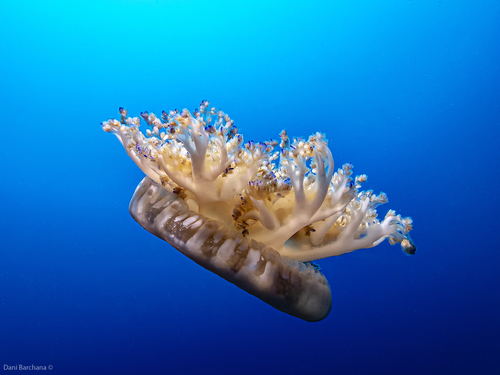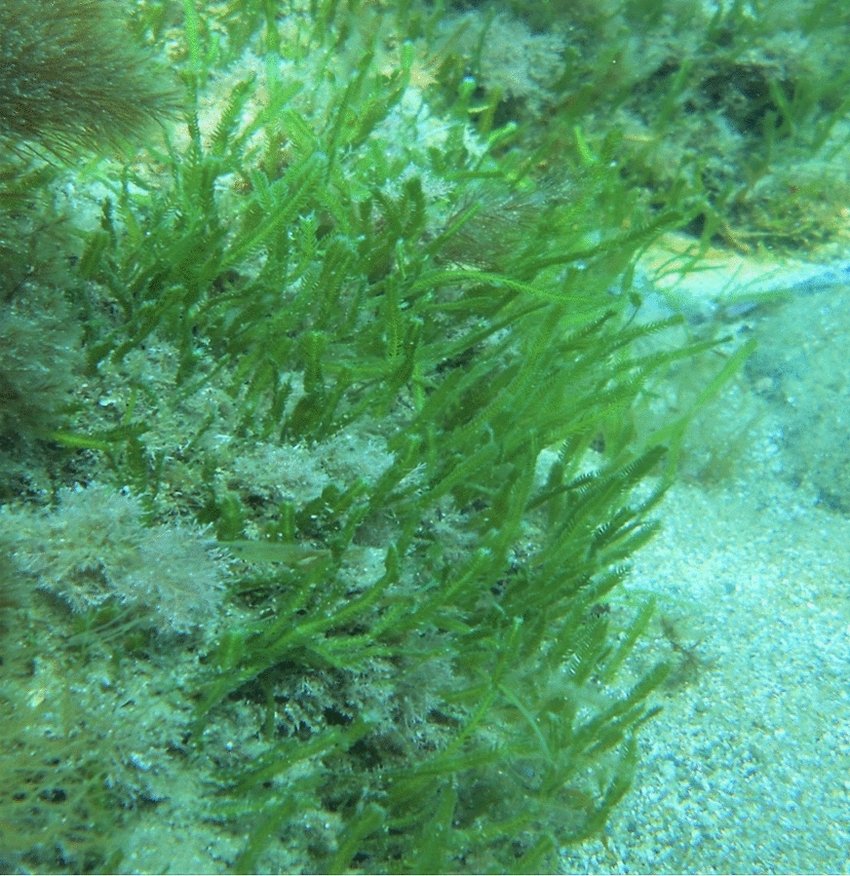ELNAIS SPECIES
The following table includes information (Species name, First Sighting in Greece, Pathway, Status, Establishment success) of the non-indigenous species recorded in Greece in the database provided by the hELlenic Network on AquatIc Species (ELNAIS). The categories of pathways of introduction of introductions are the following: TS = Transport-Stowaway (vessels), UNA = Unaided,
REL = Releases, UNK = Unknown, TC = Transport-Contaminant, EC = Escape from Confinemed.
| SPECIES NAME | FIRST SIGHTING | PATHWAY NEW/CBD | STATUS | ESTABLISHMENT SUCCESS | ||||
|---|---|---|---|---|---|---|---|---|
| Cercozoa, Endomyxa | ||||||||
| Marteilia refringens Cavalier-Smith, 2002 | 1997 | TC | AL | est | ||||
| Marinomyxa marina (Lipkin & Avidor) Kolátková, Čepička, Hoffman et Vohník, 2020 | 2018 | TC | AL | est | ||||
| Foraminifera | ||||||||
| Amphistegina lobifera Larsen, 1976 | 1955-64 | UNA | AL | inv | ||||
| Amphistegina lessonii d'Orbigny in Guérin-Méneville, 1832 | 1974 | UNA | AL | est | ||||
| Clavulina cf. multicamerata Chapman, 1907 | 2012 | TS | AL | cas | ||||
| Heterostegina depressa d’Orbigny, 1826 | <1988 | UNA, TS | AL | est | ||||
| Triloculina cf. fichteliana d'Orbigny, 1839 | 2006 | UNA, TS | AL | est | ||||
| Planogypsina acervalis (Brady, 1884) | 1909 | UNA | AL | est | ||||
| Sigmamiliolinella australis (Parr, 1932) | 2001 | UN | AL | est | ||||
| Ochrophyta | ||||||||
| Colpomenia peregrina Sauvageau | 1986 | TS-hulls | AL | est | ||||
| Cutleria multifida (Turner) Greville | 1950 | TS-Angl/fis | AL | est | ||||
| Dictyota cyanoloma Tronholm, De Clerck, A.Gómez-Garreta & Rull Lluch | 2013 | TS-hulls | AL | cas | ||||
| Pseudochattonella verruculosa (Hara & Chihara) Tanabe-Hosoi, Honda, Fukaya, Inagaki & Sako | 1998 | TS | AL | cas | ||||
| Pylaiella littoralis (Linnaeus) Kjellman | 1967 | TS-hulls | AL | que | ||||
| Scytosiphon dotyi Wynne | 2013 | TS-hulls | AL | que | ||||
| Stypopodium schimperi (Kützing) M.Verlaque & Boudouresque | 1996 | UNA | AL | inv | ||||
| Plantae | Rhodophyta | |||||||
| Antithamnion amphigeneum A.Millar, 1990 | 2013 | AL | unk | |||||
| Asparagopsis armata Harvey | 2010 | UNA | AL | cas | ||||
| Asparagopsis taxiformis (Delile) Trevisan de Saint-Léon | 1992 | TS-Angl/fis | AL | inv | ||||
| Botryocladia madagascariensis G. Feldmann | 2006 | TS-Angl/fis | AL | est | ||||
| Ceramium strobiliforme Lawson & John | 2001 | TS-hulls | AL | que | ||||
| Chondria collinsiana Howe | 1980 | TS-hulls | AL | que | ||||
| Colaconema codicola (Børgesen) Stegenga, J.J.Bolton & R.J.Anderson, | 2019 | AL | unk | |||||
| Hypnea anastomosans Papenfuss, Lipkin & P.C. Silva | 2008 | UNA | AL | est | ||||
| Hypnea cornuta (Kützing) J. Agardh | 1894 | TS-Angl/fis | AL | est | ||||
| Hypnea spinella (C.Agardh) Kützing | 1979 | TS-Angl/fis | AL | est | ||||
| Hypnea valentiae (Turner) Montagne | 2009 | TS-hulls | AL | cas | ||||
| Laurencia caduciramulosa Masuda & Kawaguchi | 2001 | TS-hulls | AL | est | ||||
| Lophocladia lallemandii (Montagne) F. Schmitz | 1908 | TS-Angl/fis | AL | est | ||||
| Melanothamnus harveyi (Bailey) Díaz-Tapia & Maggs | 2006 | TS-hulls | AL | est | ||||
| Sarconema scinaioides Børgesen | 1980 | EC | AL | cas | ||||
| Womersleyella setacea (Hollenberg) R.E. Norris | 1988 | TS-Angl/fis | AL | inv | ||||
| Chlorophyta | ||||||||
| Caulerpa cylindracea Sonder | 1993 | UNA | AL | inv | ||||
| Caulerpa racemosa var. lamourouxii f. requienii (Montagne) Weber van Bose | 1956 | UNA | AL | est | ||||
| Caulerpa taxifolia var. distichophylla (Sonder) Verlaque, Huisman & Procaccini | 2010 | UNA | AL | est | ||||
| Codium fragile (Suringar) Hariot | 1992 | TS-Angl/fis | AL | inv | ||||
| Tracheophyta | ||||||||
| Halophila stipulacea (Forsskål) Ascherson | 1894 | TS, UNA | AL | est | ||||
| Animalia | Porifera | |||||||
| Paraleucilla magna Klautau, Monteiro & Borojevic, 2004 | 2014 | TC | AL | est | ||||
| Ctenophora | ||||||||
| Beroe ovata Mayer, 1912 | 2004 | UNA | AL | cas | ||||
| Mnemiopsis leidyi (Agassiz, 1865) | 1990 | UNA | AL | est | ||||
| Cnidaria | ||||||||
| Hydrozoa | ||||||||
| Clytia linearis (Thornely, 1900) | 1977 | UNA | AL | est | ||||
| Sertularia marginata (Kirchenpauer, 1864) | 1990 | TS | AL | est | ||||
| Scyphozoa | ||||||||
| Cassiopea andromeda (Forsskål, 1775) | 1942 | UNA | AL | est | ||||
| Phylloriza punctata von Lendenfeld, 1884 | 2005 | UN | AL | unk | ||||
| Rhopilema nomadica Galil, 1990 | 2006 | UNA | AL | cas | ||||
| Chrysaora cf. achlyos Martin, Gershwin, Burnett, Cargo & Bloom, 1997 | 2018 | TS | AL | cas | ||||
| Platyhelminthes | ||||||||
| Glyphidohaptor plectocirra (Paperna, 1972) | 2010 | TC | AL | est | ||||
| Mollusca | ||||||||
| Bivalvia | ||||||||
| Anadara transversa (Say, 1822) | 1993 | TS-hulls | AL | est | ||||
| Brachidontes pharaonis (P. Fischer, 1870) | 1975 | UNA, TS | AL | est | ||||
| Chama asperella Lamarck, 1819 | 2007 | UNA, TS | AL | est | ||||
| Chama pacifica Broderip, 1835 | 2005 | UNA | AL | est | ||||
| Clementia papyracea (Gmelin, 1791) | 1985 | UNA | AL | cas | ||||
| Crassostrea/Magallana sp./spp. | ≤1989 | EC? | AL | est | ||||
| Dendostrea cf. folium (Linnaeus, 1758) | 2005 | UNA, TS | AL | inv | ||||
| Fulvia fragilis (Forsskål in Niebuhr, 1775) | 1997 | UNA, TS | AL | inv | ||||
| Isognomon legumen (Gmelin, 1791) | 2016 | UNA | AL | est | ||||
| Isognomon aff. australica (Reeve, 1858) | 2016 | TS, COR | AL | unk | ||||
| Isognomon bicolor (C.B. Adams, 1845) | 2022 | AL | unk | |||||
| Malleus regula (Forsskål in Niebuhr, 1775) | ≤1996 | UNA | AL | est | ||||
| Mya arenaria Linnaeus, 1758 | 1984 | TS, TC | AL | est | ||||
| Petricolaria pholadiformis Lamarck, 1818 | 1985 | TS | AL | est | ||||
| Pinctada imbricata Röding, 1798 | 1961 | EC, TS-hulls | AL | inv | ||||
| Septifer cumingii (Dunker, 1855) | 2010 | UNA | AL | est | ||||
| Spondylus cf. spinosus Schreibers, 1793 | 2008-13 | TS-hulls | AL | cas | ||||
| Gastropoda | ||||||||
| Atys angustatus E. A. Smith, 1872 | 2017 | UNA | AL | cas | ||||
| Atys ehrenbergi (Issel, 1869) | 2016 | COR | AL | unk | ||||
| Acteocina mucronata (Philippi, 1849) | 1991 | UNA | AL | cas | ||||
| Baeolidia moebii Bergh, 1888 | 2021 | AL | est | |||||
| Biuve fulvipunctata (Baba, 1938) | ?? | AL | unk | |||||
| Bulla arabica Malaquias & Reid, 2008 | 1998 | TS | AL | est | ||||
| Bursatella leachii (De Blainville, 1817) | 1975 | UNA, TS | AL | est | ||||
| Cerithidium perparvulum (Watson, 1886) | 2010 | UNA | AL | cas | ||||
| Cerithiopsis pulvis (A. Issel, 1869) | 2010 | UNA | AL | est | ||||
| Cerithiopsis tenthrenois (Melvill, 1896) | 1994 | UNA | AL | cas | ||||
| Cerithium scabridum Philippi, 1848 | 2007 | UNA | AL | est | ||||
| Cingulina isseli (Tryon, 1886) | 2021 | TS | AL | est? | ||||
| Conomurex persicus (Swainson, 1821) | 1983 | UNA, TS | AL | inv | ||||
| Coryphellina rubrolineata O'Donoghue, 1929 | 2009 | UNA | AL | est | ||||
| Crepidula fornicata (Linnaeus, 1758) | 1985 | TC, TS | AL | est | ||||
| Cycloscala hyalina (G.B. Sowerby II, 1844) | <2019 | UNA | AL | est | ||||
| Dikoleps micalii Agamennone, Sbrana, Nardi, Siragusa & Germanà, 2020 | 2016 | COR? UN | AL | cas | ||||
| Diodora funiculata (Reeve, 1850) | 2013 | TS | AL | est | ||||
| Elysia nealae Ostergaard, 1955 | 2019 | unk | AL | cas | ||||
| Ergalatax junionae Houart, 2008 | 2007 | UNA | AL | est | ||||
| Eunaticina papilla (Gmelin, 1791) | 2020 | TS | AL | cas/est? | ||||
| Euthymella colzumensis (Jousseaume, 1898) | 2017 | TS/COR? | AL | est | ||||
| Goniobranchus annulatus (Eliot, 1904) | 2004 | UNA, TS | AL | est | ||||
| Lamprohaminoea ovalis (Pease, 1868) | 2001 | UNA, TS | AL | est | ||||
| Heliacus implexus (Mighels, 1845) | 2019 | AL | cas | |||||
| Hypselodoris infucata (Rüppell & Leuckart, 1831) | 2007 | UNA | AL | est | ||||
| Melanella orientalis Agamennone, Micali & Siragusa, 2020 | 2016 | COR? UN | AL | est? | ||||
| Melibe viridis (Kelaart, 1858) | 1970 | UNA, TS | AL | est | ||||
| Mnestia girardi (Audouin, 1826) | 1994 | UNA | AL | est | ||||
| Nerita sanguinolenta Menke, 1829 | 1969 | UNA | AL | cas | ||||
| Oscilla galilae Bogi, Karhan & Yokeş, 2012 | 2016 | UNA | AL | cas | ||||
| Plocamopherus ocellatus Rüppell & Leuckart, 1828 | 2020 | UNA | AL | cas | ||||
| Polycerella emertoni Verrill, 1881 | 1995 | TS | AL | cas | ||||
| Pyrunculus fourierii (Audouin, 1826) | 2013 | UNA | AL | cas | ||||
| Pyrgulina pupaeformis (Souverbie, 1865) | 2017 | TS | AL | est | ||||
| Rapana venosa (Valenciennes, 1846) | 1986 | UNA | AL | cas | ||||
| Rhinoclavis kochi (Philippi, 1848) | 2016 | UNA | AL | est | ||||
| Ringicula minuta H. Adams, 1872 | 2019 | TS | AL | cas | ||||
| Smaragdia souverbiana (Montrouzier, 1863) | ≤1993 | UNA | AL | est | ||||
| Sticteulima sp. [cf. lentiginosa] (A. Adams, 1861) | 2015 | UNA, TS | AL | cas | ||||
| Sinezona plicata (Hedley, 1899) | 2019 | TS | AL | cas | ||||
| Syphonota geographica (A. Adams & Reeve, 1850) | 2002 | UNA | AL | est | ||||
| Syrnola fasciata Jickeli, 1882 | 2012 | UNA | AL | est | ||||
| Viriola sp.[cf. bayani] Jousseaume, 1884 | 2016 | UNA | AL | est | ||||
| Cephalopoda | ||||||||
| Sepioteuthis lessoniana Férussac in Lesson, 1831 complex | 2009 | UNA | CRY | est | ||||
| Annelida | ||||||||
| Axionice medusa (Savigny in Lamarck, 1818) | 1976 | UNA | AL | est | ||||
| Branchiomma bairdi (McIntosh, 1885) | 2014 | TS-hulls | AL | est | ||||
| Branchiomma luctuosum (Grube, 1869) | 1989 | TS-hulls | AL | est | ||||
| Caulleriella viridis (Langerhans, 1881) | 2006 | TS | AL | que | ||||
| Chaetozone corona Berkeley & Berkeley, 1941 | 1982 | TS | AL | est | ||||
| Desdemona ornata Banse, 1957 | 1986 | TS | AL | cas | ||||
| Dispio magnus (Day, 1955) | 1982 | TS | AL | cas | ||||
| Dodecaceria capensis Day, 1961 | 1976 | TS | AL | est | ||||
| Dorvillea similis (Crossland, 1924) | 2014 | UNA | AL | cas | ||||
| Ficopomatus enigmaticus (Fauvel, 1923) | 1959 | TS-hulls | AL | est | ||||
| Glycinde bonhourei Gravier, 1904 | 2007 | UNA | AL | cas | ||||
| Hydroides brachyacantha Rioja, 1941 | 2015 | TS-hulls | AL | cas | ||||
| Hydroides dirampha Mörch, 1863 | 1981 | TS-hulls | AL | est | ||||
| Hydroides elegans (Haswell, 1883) | 1976 | TS-hulls | AL | est | ||||
| Leiocapitellides analis Hartmann-Schröder, 1960 | 2000 | UNA | AL | cas | ||||
| Leonnates persicus Wesenberg-Lund, 1949 | 2013 | UNA | AL | cas | ||||
| Lepidonotus tenuisetosus (Gravier, 1902) | 2008 | UNA | AL | cas | ||||
| Linopherus canariensis Langerhans, 1881 | 2007 | TC | AL | cas | ||||
| Lumbrinerides neogesae Miura, 1981 | 2002 | TS | AL | cas | ||||
| Lysidice collaris Grube, 1870 | 1975 | UNA | AL | est | ||||
| Mediomastus capensis Day, 1961 | 2006 | TS | AL | cas | ||||
| Neanthes agulhana (Day, 1963) | 2007 | TS | AL | cas | ||||
| Notomastus aberans Day, 1957 | 1964 | UNA | AL | est | ||||
| Paradyte cf. crinoidicola (Potts, 1910) | 1964 | UNA | AL | cas | ||||
| Polycirrus twisti Potts, 1928 | 1983 | UNA | AL | est | ||||
| Polydora cornuta Bosc, 1802 | 2008 | TS | AL | cas | ||||
| Prionospio pulchra Imajima, 1990 | 1991 | TC | AL | cas | ||||
| Protodorvillea biarticulata Day, 1963 | 1975 | TS | AL | est | ||||
| Pseudonereis anomala (Gravier, 1900) | 2003 | TS | AL | est | ||||
| Pseudopolydora paucibranchiata (Okuda, 1937) | 2005 | TS | AL | est | ||||
| Sigambra parva (Day, 1963) | 1975 | TS | AL | est | ||||
| Spirobranchus tetraceros (Schmarda, 1861) | 1970 | TS-hulls | AL | est | ||||
| Spirorbis marioni Caullery & Mesnil, 1897 | 1996 | TS-hulls | AL | est | ||||
| Timarete punctata (Grube, 1859) | 2006 | TS | AL | cas | ||||
| Bryozoa | ||||||||
| Cheilostomatida | ||||||||
| Celleporaria brunnea (Hincks, 1884) | 2015 | TS-hulls | AL | unk | ||||
| Celleporaria vermiformis (Waters, 1909) | 2015 | TS-hulls | AL | est | ||||
| Crepidacantha poissonii (Audouin, 1826) | 1986 | TS-hulls | AL | unk | ||||
| Crisularia serrata (Lamarck, 1816) | 1967 | TS-hulls | AL | unk | ||||
| Hippopodinasp. A as Hippopodina feegeensis (Busk, 1884) | 1996 | TS-hulls | AL | est | ||||
| Juxtacribrilina mutabilis (Ito, Onishi & Dick, 2015) | 2019-20 | TS | AL | est? | ||||
| Microporella coronata (Audouin, 1826) | 1967 | TS-hulls | AL | que | ||||
| Tricellaria inopinata d'Hondt & Occhipinti Ambrogi, 1985 | 2015 | TS-hulls | AL | unk | ||||
| Ctenostomatida | ||||||||
| Amathia verticillata (delle Chiaje, 1822) | 1969 | TS-hulls | AL | est | ||||
| Crustacea | ||||||||
| Cirripedia | ||||||||
| Amphibalanus eburneus (Gould, 1841) | 1970 | TS-hulls | AL | unk | ||||
| Balanus trigonus Darwin, 1854 | 1970 | TS, TC | AL | est | ||||
| Megabalanus tintinnabulum (Linnaeus, 1758) | 1996 | TS-hulls | AL | cas | ||||
| Copepoda | ||||||||
| Acartia (Acanthacartia) tonsa Dana, 1849 | 2005 | TS | AL | est | ||||
| Arietellus pavoninus (G. O. Sars, 1905) | 1967 | UNA, TS | AL | est | ||||
| Calanopia elliptica (Dana, 1846) | 1988 | UNA | AL | est | ||||
| Centropages furcatus (Dana, 1852) | 1988 | UNA | AL | est | ||||
| Euchaeta concinna Dana, 1849 | 1987 | AL | est | |||||
| Oithona davisae Ferrari F.D. & Orsi, 1984 | 2018 | UNA, TS | AL | cas | ||||
| Pseudodiaptomus marinus Sato, 1913 | 2016 | TS | AL | est | ||||
| Paracartia grani (G. O. Sars, 1904) | 1988 | TS-hulls | AL | est | ||||
| Parvocalanus crassirostris (Dahl, 1894) | 2009 | UN | AL | est | ||||
| Stomatopoda | ||||||||
| Erugosquilla massavensis (Kossmann, 1880) | 1963 | UNA | AL | est | ||||
| Decapoda | ||||||||
| Actaeodes tomentosus (H. Milne Edwards, 1834) | 2013 | UNA | AL | cas | ||||
| Alpheus rapacida (de Man, 1908) | 1998 | UNA | AL | cas | ||||
| Arcania brevifrons Chen, 1989 | 2021 | UNA | AL | unk | ||||
| Atergatis roseus (Rüppell, 1830) | 2009 | UNA | AL | est | ||||
| Calappa pelii Herklots, 1851 | 2005 | UN | AL | cas | ||||
| Callinectes sapidus Rathbun, 1896 | 1947 | TS | AL | inv | ||||
| Carupa tenuipes Dana, 1851 | 2009 | UNA | AL | est | ||||
| Charybdis (Charybdis) hellerii (A. Milne-Edwards, 1867) | 2004 | UNA | AL | est | ||||
| Charybdis (Goniohellenus) longicollis Leene, 1938 | 1996 | UNA | AL | est | ||||
| Coleusia signata (Paulson, 1875) | 2005 | UNA | AL | est | ||||
| Dyspanopeus sayi (Smith, 1969) | 2015 | TS | AL | cas | ||||
| Homarus americanus H. Milne Edwards, 1837 | 2019 | UNK | AL | cas | ||||
| Gonioinfradens giardi (Nobili, 1905) | 2010 | UNA | AL | est | ||||
| Ixa monodi Holthuis & Gottlieb, 1956 | 1999 | UNA | AL | est | ||||
| Matuta victor (Fabricius, 1781) | 2018 | UNA | AL | cas | ||||
| Macrophthalmus indicus Davie, 2012 | 2009 | UNA | AL | cas | ||||
| Metapenaeopsis aegyptia Galil & Golani, 1990 | 1996 | UNA | AL | est | ||||
| Metapenaeopsis mogiensis consobrina (Nobili, 1904) | 1995 | UNA | AL | est | ||||
| Myra subgranulata Galil & Golani, 1990 | 2004 | UNA | AL | est | ||||
| Penaeus aztecus Ives, 1891 | 2012 | UNA | AL | inv | ||||
| Penaeus hathor (Burkenroad, 1959) | 2012 | UNA | AL | est | ||||
| Penaeus pulchricaudatus Stebbing, 1914 | 1995 | UNA | AL | est | ||||
| Portunus segnis (Forsskål, 1775) | 1991 | UNA | AL | est | ||||
| Thalamita poissonii (Audouin, 1826) | 1983 | UNA | AL | est | ||||
| Urocaridella pulchella Yokes & Galil, 2006 | 2018 | UNA | AL | est | ||||
| Trachysalambria palaestinensis (Steinitz, 1932) | 1995 | UNA | AL | est | ||||
| Xanthias lamarckii (H. Milne Edwards, 1834) | 2013 | UNA | AL | cas | ||||
| Amphipoda | ||||||||
| Bemlos leptocheirus (Walker, 1909) | 2015 | UNA | AL | unk | ||||
| Caprella scaura Templeton, 1836 | 2002 | UN | AL | est | ||||
| Isopoda | ||||||||
| Cymodoce fuscina Schotte & Kensley, 2005 | 2015 | TS | AL | cas | ||||
| Mesanthura cf. romulea Poore & Lew-Ton, 1986 | 2016 | TS | AL | unk | ||||
| Paracerceis sculpta (Holmes, 1904) | 2009 | TS | AL | est | ||||
| Paranthura japonica Richardson, 1909 | 2012 | TS | AL | unk | ||||
| Sphaeroma walkeri Stebbing, 1905 | 2015/2017 | TS | AL | unk | ||||
| Echinodermata | ||||||||
| Ophiuroidea | ||||||||
| Ophiactis savignyi (Müller & Troschel, 1842) | 1993 | UNA | AL | cas | ||||
| Echinoidea | ||||||||
| Diadema setosum (Leske, 1778) | 2010 | UNA | AL | est | ||||
| Holothuroidea | ||||||||
| Synaptula reciprocans (Forsskål, 1775) | 1995 | UNA | AL | inv | ||||
| Chordata, Tunicata | ||||||||
| Ascidiella aspersa (Müller, 1776) | 1901 | UN | AL | est | ||||
| Ciona robusta Hoshino & Tokioka, 1967 (as Ciona intestinalis (Linnaeus, 1767)) | 1901 | TS-hulls | AL | est | ||||
| Diplosoma listerianum (Milne Edwards, 1841) | 1996 | TS-hulls | AL | est | ||||
| Herdmania momus (Savigny, 1816) | 2010 | UNA | AL | est | ||||
| Microcosmus squamiger Michaelsen, 1927 | 2019 | TS | AL | est | ||||
| Polyclinum constellatum Savigny, 1816 | 2019 | TS | AL | unk | ||||
| Phallusia nigra Savigny, 1816 | 2008 | UNA | AL | est | ||||
| Styela plicata (Lesueur, 1823) | 1968 | TS-hulls | AL | est | ||||
| Symplegma brakenhielmi (Michaelsen, 1904) | 2015 | TS-hulls | AL | est | ||||
| Chordata, Pisces | ||||||||
| Abudefduf sexfasciatus (Lacepède, 1801) | 2017 | REL | AL | cas | ||||
| Abudefduf vaigiensis (Quoy & Gaimard, 1825) | 2018 | UN | AL | cas | ||||
| Acanthurus cfr gahhm (Forsskål, 1775) | 2019 | REL | AL | cas | ||||
| Acanthurus sohal (Forsskål, 1775) | 2017 | COR | AL | cas | ||||
| Alepes djedaba (Forsskål, 1775) | 1960 | UNA | AL | est | ||||
| Apogonichthyoides pharaonis (Bellotti, 1874) | 1982 | UNA | AL | est | ||||
| Atherinomorus forskalii (Forster, 1801) | 1986 | UNA | AL | est | ||||
| Bregmaceros nectabanus Whitley, 1941 | 2014 | UNA | AL | est | ||||
| Callionymus filamentosus Valenciennes, 1837 | 2003 | UNA | AL | est | ||||
| Chaetodipterus faber (Broussonet, 1782) | 2019 | REL | AL | est | ||||
| Champsodon nudivittis (Ogilby, 1895) | 2012 | UNA | AL | est | ||||
| Cheilodipterus novemstriatus (Rüppell, 1838) | 2020 | UNA | AL | est | ||||
| Equulites klunzingeri (Steindachner, 1898) | 1946-64 | UNA | AL | cas | ||||
| Etrumeus golanii Di Battista, Randall & Bowen, 2012 | 2003 | UNA | AL | est | ||||
| Fistularia commersonii (Rüppell, 1835) | 2001 | UNA | AL | inv | ||||
| Fistularia petimba Lacepède, 1803 | 2021 | UNA | AL | unk | ||||
| Hemiramphus far (Forsskål, 1775) | 1943 | UNA | AL | est | ||||
| Lagocephalus guentheri Miranda Ribeiro, 1915 | 1952 | UNA | AL | est | ||||
| Lagocephalus sceleratus (Gmelin, 1788) | 2005 | UNA | AL | inv | ||||
| Lagocephalus suezensis Clark & Gohar, 1953 | 2003 | UNA | AL | est | ||||
| Lutjanus sebae (Cuvier, 1816) | 2010 | REL | AL | cas | ||||
| Lutjanus argentimaculatus (Forsskål, 1775) | 2019 | UNA | AL | cas | ||||
| Nemipterus randalli Russell, 1986 | 2018 | UNA | AL | cas | ||||
| Oncorhynchus kisutch (Walbaum, 1792) | 2021 | AL | cas | |||||
| Oxyurichthys petersi (Klunzinger, 1871) | 2010 | UNA | AL | est | ||||
| Pagrus major (Temminck & Schlegel, 1843) | 2019 | EC | AL | est | ||||
| Parexocoetus mento (Valenciennes, 1846) | 1946-64 | UNA | AL | est | ||||
| Parupeneus forsskali (Fourmanoir & Guézé, 1976) | 2017 | UNA | AL | est | ||||
| Pempheris rhomboidea Kossmann & Rauber, 1877 | 1983 | UNA | AL | est | ||||
| Petroscirtes ancylodon Rüppell, 1838 | 2004 | UNA | AL | est | ||||
| Planiliza haematocheila (Temminck & Schlegel, 1845) | 1995 | UNA | AL | est | ||||
| Pomacanthus imperator (Bloch, 1787) | 2016 | UNA | AL | cas | ||||
| Pomadasys stridens (Forsskål, 1775) | 2019 | UNA | AL | cas | ||||
| Pteragogus trispilus Randall, 2013 | 1992 | UNA | AL | est | ||||
| Pterois miles (Bennett, 1828) | 2009 | UNA | AL | inv | ||||
| Sargocentron rubrum (Forsskål, 1775) | 1947 | UNA | AL | est | ||||
| Saurida lessepsianus Russell, Golani & Tikochinski, 2015 | <1971 | UNA | AL | est | ||||
| Scarus ghobban Forsskål in Niebuhr, 1775 | 2014 | UNA | AL | cas | ||||
| Scomberomorus commerson Lacepède, 1800 | 2008 | UNA | AL | est | ||||
| Siganus luridus (Rüppell, 1829) | 1964 | UNA | AL | inv | ||||
| Siganus rivulatus Forsskål, 1775 | 1925 | UNA | AL | inv | ||||
| Sillago suezensis Golani, Fricke & Tikochinski, 2014 | 2018 | UNA | AL | cas | ||||
| Sphyraena chrysotaenia Klunzinger, 1884 | 1995 | UNA | AL | est | ||||
| Sphyraena flavicauda Rüppell, 1838 | 2003 | UNA | AL | est | ||||
| Stephanolepis diaspros Fraser-Brunner, 1940 | 1943 | UNA | AL | est | ||||
| Synchiropus sechellensis Regan, 1908 | 2014 | UNA | AL | est | ||||
| Terapon theraps Cuvier, 1829 | 2008 | UN | AL | cas | ||||
| Torquigener hypselogeneion ex T flavimaculosus Hardy & Randall, 1983 | 2006 | UNA | AL | est | ||||
| Tylerius spinosissimus (Regan, 1908) | 2004 | UNA | AL | est | ||||
| Upeneus moluccensis (Bleeker, 1855) | 1947 | UNA | AL | est | ||||
| Upeneus pori Ben-Tuvia & Golani, 1989 | 2003 | UNA | AL | est | ||||
| Vanderhorstia mertensi Klausewitz, 1974 | 2019 | UNA | AL | cas | ||||
| Chordata, Mammalia | ||||||||
| Sousa plumbea (G. Cuvier, 1829) | 2017 | UNA | AL | cas |

